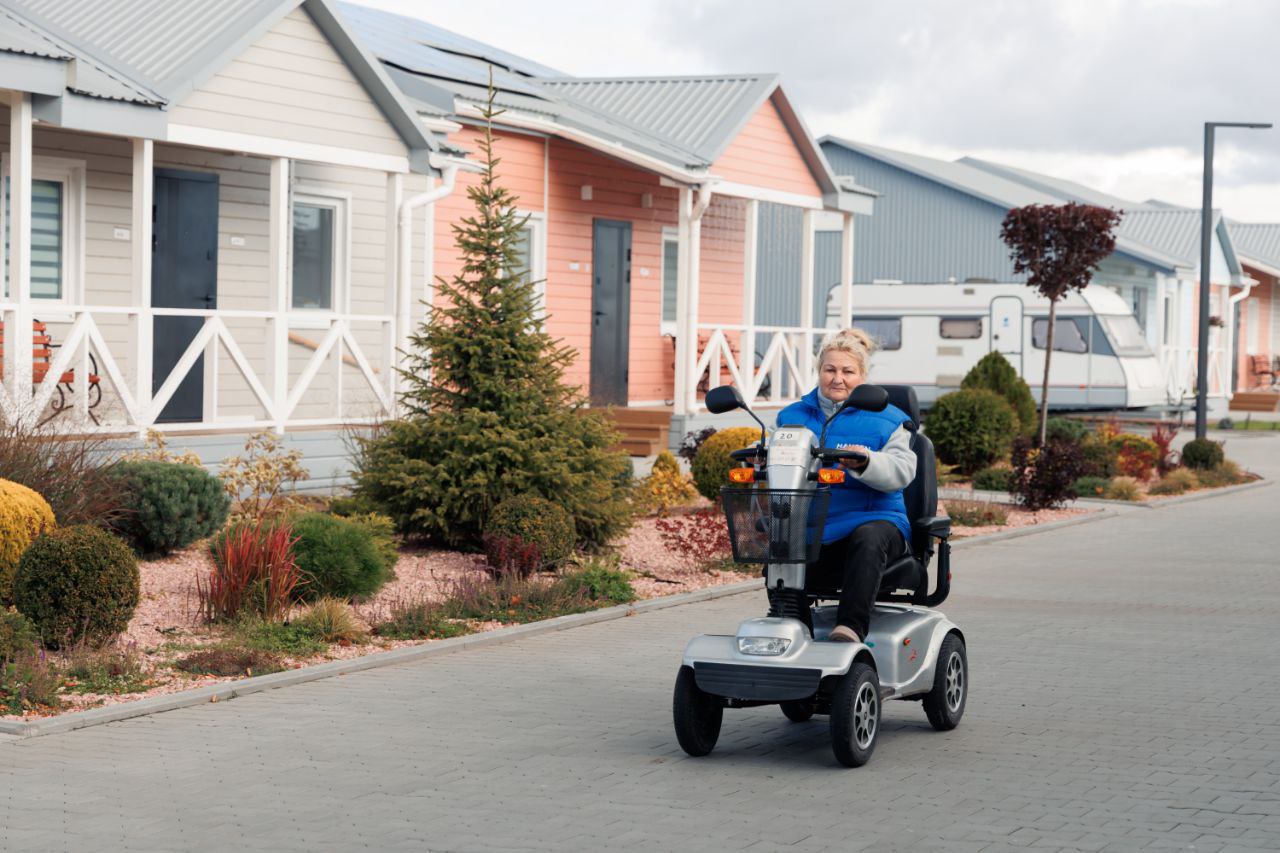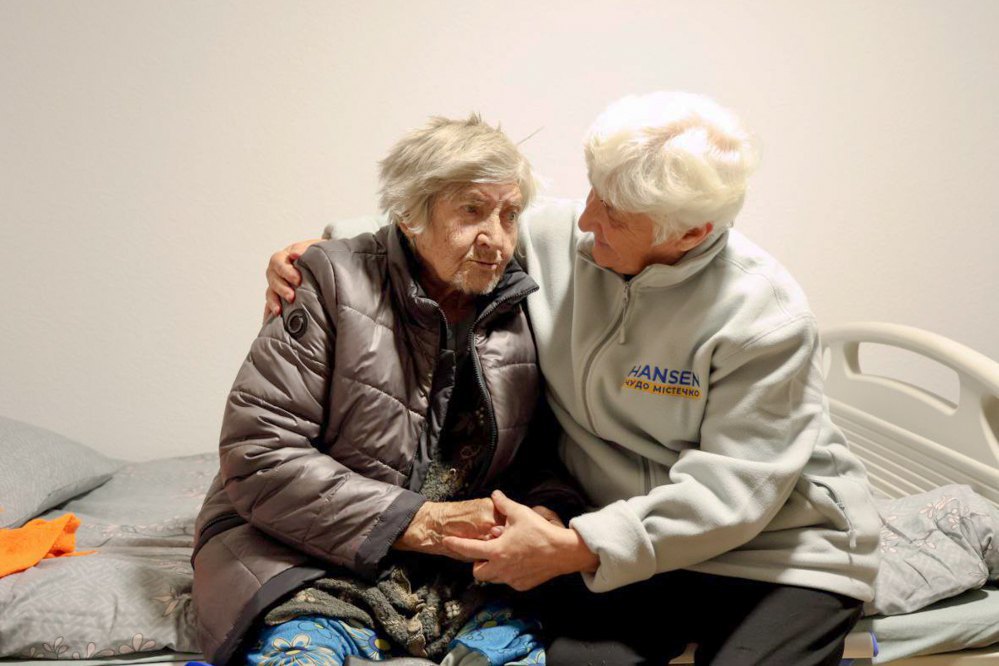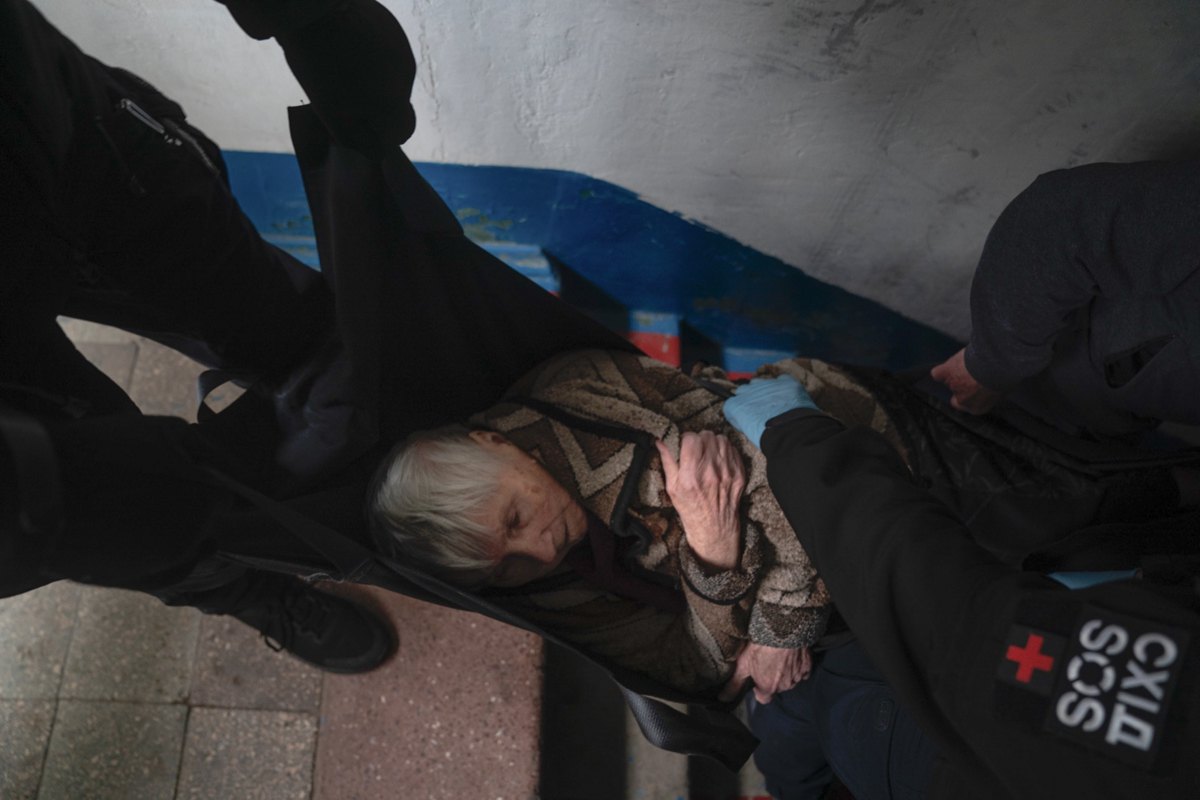
Two sides of the same coin
According to the Ministry of Community and Territorial Development, over the past five months, more than 120,000 people have been evacuated through transit centres, of whom almost 4,000 are people with reduced mobility. The largest flow is from the Donetsk Region. Since the beginning of 2025, according to the Donetsk Regional State Administration, almost 11,000 Donetsk residents over the age of 60 have passed through transit points.
According to Kateryna Skrypova, the pace and scale of the evacuation of elderly people in 2025 is approaching that of 2022. On the one hand, this is the result of active offensive actions by the enemy. Another factor is the development of unmanned technologies, which has significantly expanded the front line itself. This wide strip of destruction affects civilians, humanitarian missions and evacuation crews alike. Access to this area has become more difficult for humanitarian organisations, for example, as they do not have enough armoured transport or means of protection against drones.
And this is against the backdrop of two extremes. Persuading the older generation to leave is perhaps the most difficult task. This creates considerable problems for evacuation teams, especially those working close to the front line. We are talking about Phoenix (State Emergency Service) and White Angels (National Police).
“These evacuations take place under constant artillery and MLRS fire and under close enemy drone surveillance. Therefore, it is important to get people out quickly. Even a few minutes in open terrain is a risk of being hit. In such conditions, we have to persuade people for a long time," said Deputy Minister of Internal Affairs Oleksiy Serheyev at a briefing, citing examples.
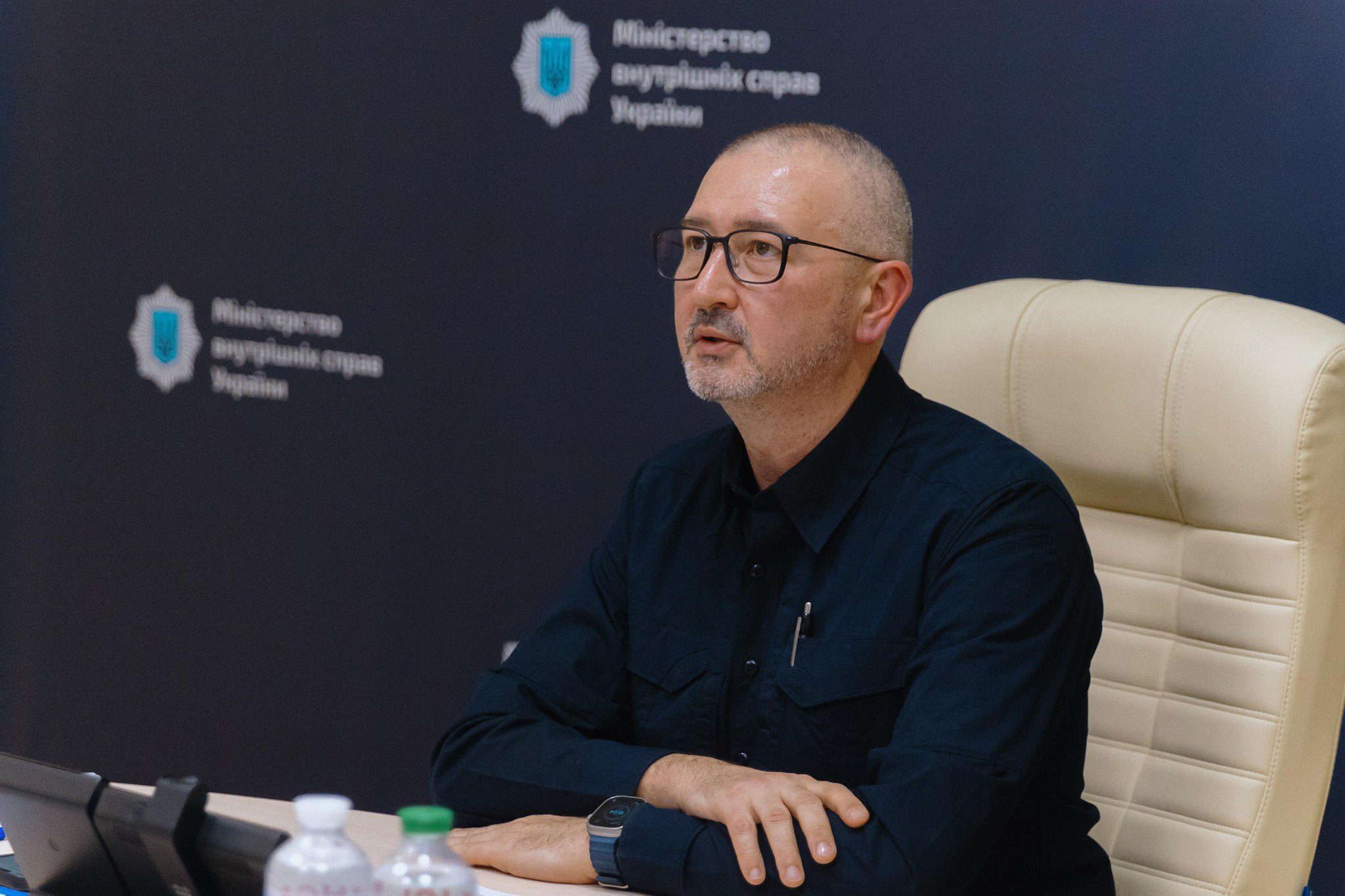
For example, in order to convince an elderly man to evacuate, the White Angels in Kostyantynivka had to turn on StarLink and contact his daughter. Often, the elderly people refuse to leave their animals behind. An elderly woman from the village of Stali Vyrky in the Sumy Region did not want to leave without her twelve dogs, and a resident of the village of Mogrytsya agreed to evacuate only if his eleven goats were taken with him.
"The problem is that evacuation happens after the fact. People stay until the last minute and evacuate when street fighting is already underway. There are several reasons for this. They don't know where they will go or what will happen to them when they leave. This prevents them from planning their departure in advance when the enemy is advancing in certain areas and there is a tendency for shelling to increase. But we have big problems with providing information,” explains Kateryna. “We are currently trying to launch this system in the Dnipropetrovsk Region. We travel 30-40 km from the front line and tell people what to do in different situations, what services they can get and where, and what the resettlement options are. This gives them a vision and an understanding of their options. They live with this idea for a while. Then they start to move more calmly and a little earlier. Because when this story begins: on the one hand, there are street fights, and on the other, people need to be evacuated — this puts a very heavy burden on the White Angels. They are the only ones working in such hot spots because they have armoured vehicles and electronic warfare protection systems. And also the military, who also help to pick up and transport people to the meeting points. In other words, a well-planned departure makes everyone's work easier and saves people's lives and health.”
And here is another extreme — where to go for the elderly, especially those who are alone and need outside help and care.
If you look at the evacuation chain that has developed over the last year and a half, at each stage there is a problem of a lack of places to some extent. First, a person ends up in a transit centre. There are twenty such centres in total, but the largest flows are received in Pavlohrad and Volosky in the Dnipropetrovsk Region and in Lozova in the Kharkiv Region. The centres in Volosky and Lozova were opened recently because the one in Pavlohrad could no longer cope with the influx. With a few exceptions, stays there are limited to three days. Then you have to move on. According to Deputy Minister of Community and Territorial Development Oleksiy Ryabykin, 80% of people know their destination in advance. The rest are detained at transit points. Most of them are people with limited mobility.
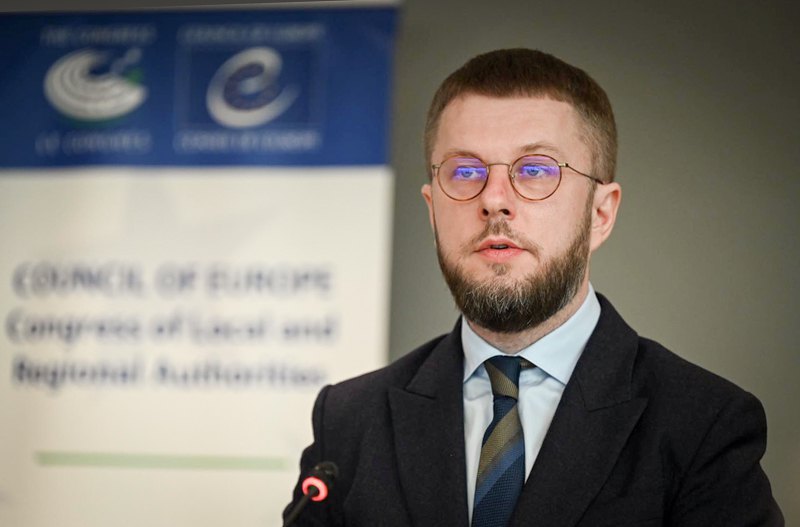
Requests to host regions for accommodation are sent by regional state administrations.
"We are also constantly searching. These are direct requests to communities and regions, a constant dialogue. If these are people who need inpatient care, there are very few places for them in Ukraine," says Kateryna Skrypova.
While they are searching, they are transported to Dnipro, to the transit Centre for Social Adaptation of People with Disabilities of the public organisation Ocean of Good. This is an intermediate stop where people can stay for a longer period of time and where there are conditions for them. The facility currently has 150 places. It is home to elderly people with limited mobility who were rescued from the frontline territories by the East SOS evacuation teams. The organisation helped to set up the centre and is now raising funds to cover staff salaries.
Here, elderly people recover and their condition stabilises, as losing their homes often causes their health to deteriorate. The foundation's lawyers and social workers help them to recover and complete the necessary paperwork.
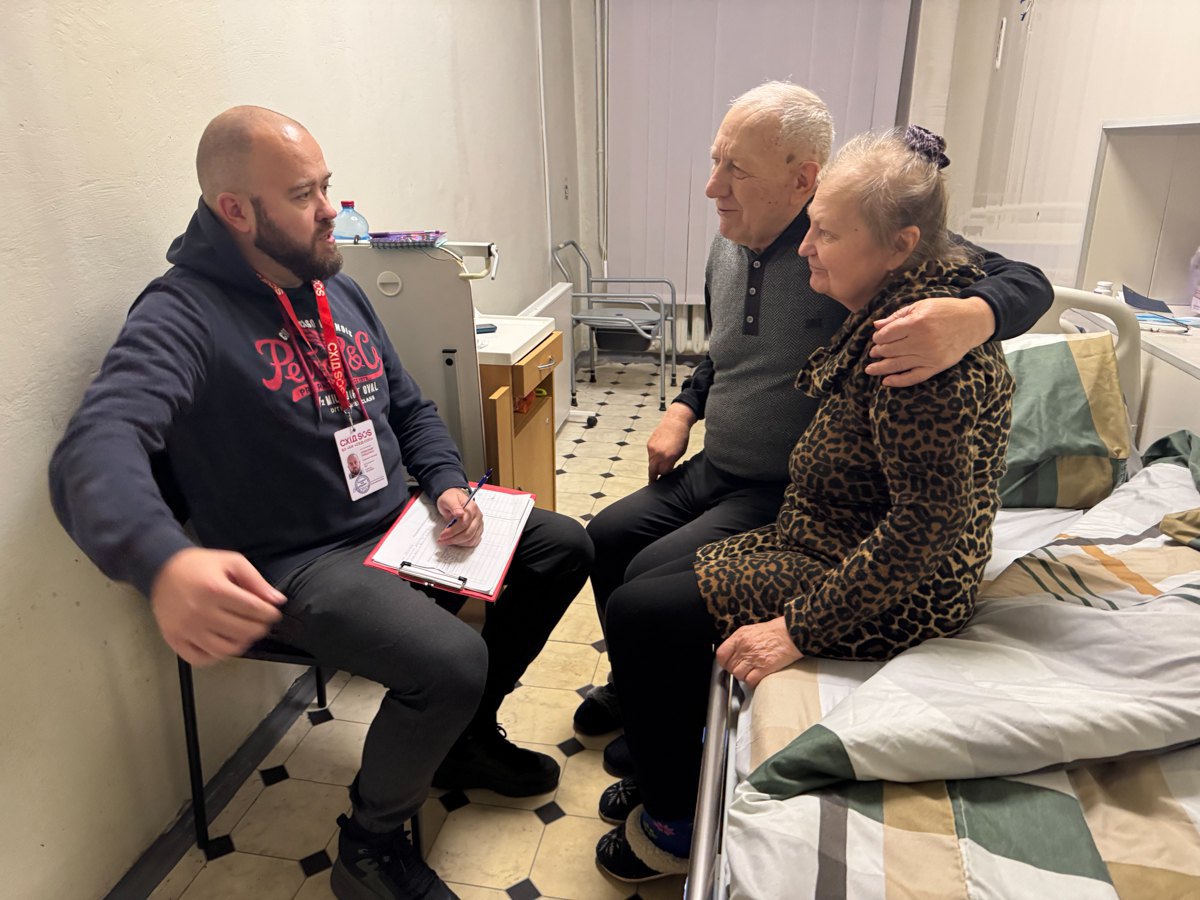
There is a similar temporary shelter called Bez Mezh (Without Borders) for 34 people in Kharkiv. Another one for 53 people is located in Zaporizhzhya. They were also opened with the support of philanthropists. This is an important link in the evacuation chain, says Kateryna. However, there is still a critical shortage of such shelters.
The Ministry of Social Policy suggests looking for additional places in hospitals. An elderly person brought to a transit point undergoes a medical consultation. If further treatment or stabilisation is needed, they are referred to a specific medical facility where they can receive nursing care for a month. The Ministry of Health has already identified 212 institutions that will participate in this programme. This represents an additional 2,635 places. Contracting between the National Health Service and healthcare institutions is currently underway. According to the ministry, everyone stands to gain from this. On the one hand, there are additional places for accommodation immediately after evacuation, and on the other hand, hospitals with a small flow of patients will receive funding from the state, which amounts to 16,000 hryvnyas per person. In theory, a person receiving nursing care should be accompanied by a social worker, who will also help with the subsequent search for housing.
According to Olha Volkova, head of the public organisation Ocean of Good, it takes two to three months to find a solution for temporary shelter residents who require inpatient care.

Most places are sought in geriatric nursing homes. Obviously, this runs counter to the policy of deinstitutionalisation.
"But given the scale of the need, I don't see any other way out yet," she says.
And here again, there is a set of problems.
Places for inpatient care
Conditions in such institutions vary greatly. For example, during a monitoring visit to the Petrykivskyy Regional Geriatric Nursing Home, where internally displaced persons live, some residents complained about the presence of rats and cockroaches. Last year, monitors saw an even worse picture at the Korshiv Geriatric Nursing Home: old iron beds, buckets and bottles instead of chairs with sanitary equipment, overcrowded rooms, dirty and worn clothing on residents, washed-out linen, even though new bedding and blankets were lying in the storeroom.
Of course, not all of them are like this. Many geriatric nursing homes are supported by volunteers and religious organisations. But one way or another, the capacity of institutional facilities to accept elderly people who need outside care has been exhausted, according to the Ministry of Social Policy. According to the statistics we have today, there are plus or minus 100 vacant places, explains Deputy Minister of Social Policy Tetyana Kireyeva.
"We are trying to work with inpatient care facilities. We are renovating neglected buildings in which communities are committed to opening new geriatric or territorial centres for the provision of social services, and we are purchasing equipment so that we can then accommodate people there," says Kateryna Skrypova.

Since the start of the full-scale invasion, the charity foundation has created 665 new places. This led to the establishment of a facility for elderly people, including those evacuated from dangerous frontline and frontline areas, in Kalush. It was opened in 2023. East SOS renovated and equipped the building of a former tuberculosis dispensary. The foundation itself proposed to the city to create the centre. The city agreed. It was expected that 55% of the residents would be people who had to leave their homes, and the rest would be locals. Currently, 33 people live in the facility, 26 of whom are internally displaced.
However, dialogue with communities varies. Not everyone wants to accept elderly people, as such facilities are financed from local budgets and this is an additional burden for them.
According to the law, 75% of the pensions of people living in these facilities are taken away for maintenance. But given that these are usually minimum pensions, according to Vasyl Ilnytskyy, director of the Kalush Geriatric Centre, these funds are not even enough to cover food costs. For example, if a person is admitted to the centre on a paid basis, it will cost more than 20,000 hryvnyas per month. Currently, its maintenance costs the city approximately 7 million hryvnyas per year.
“So some communities are trying to distance themselves somehow. In their defence, I will say that the issue of financing institutions and equipping them with everything they need is indeed a real one. And we are trying to approach this issue from a position of support. We say: we will do something for you — then it will be easier for you and we will send people to you. Or we will completely rebuild such a centre. But then we make sure to sign an agreement with the community that they will take on its further financing. And some of the places in such newly created institutions go to local residents. So that they not only have an interest, but also understand that this is not competition, this is a shared history. And there was no such attitude towards the evacuees as towards "newcomers".
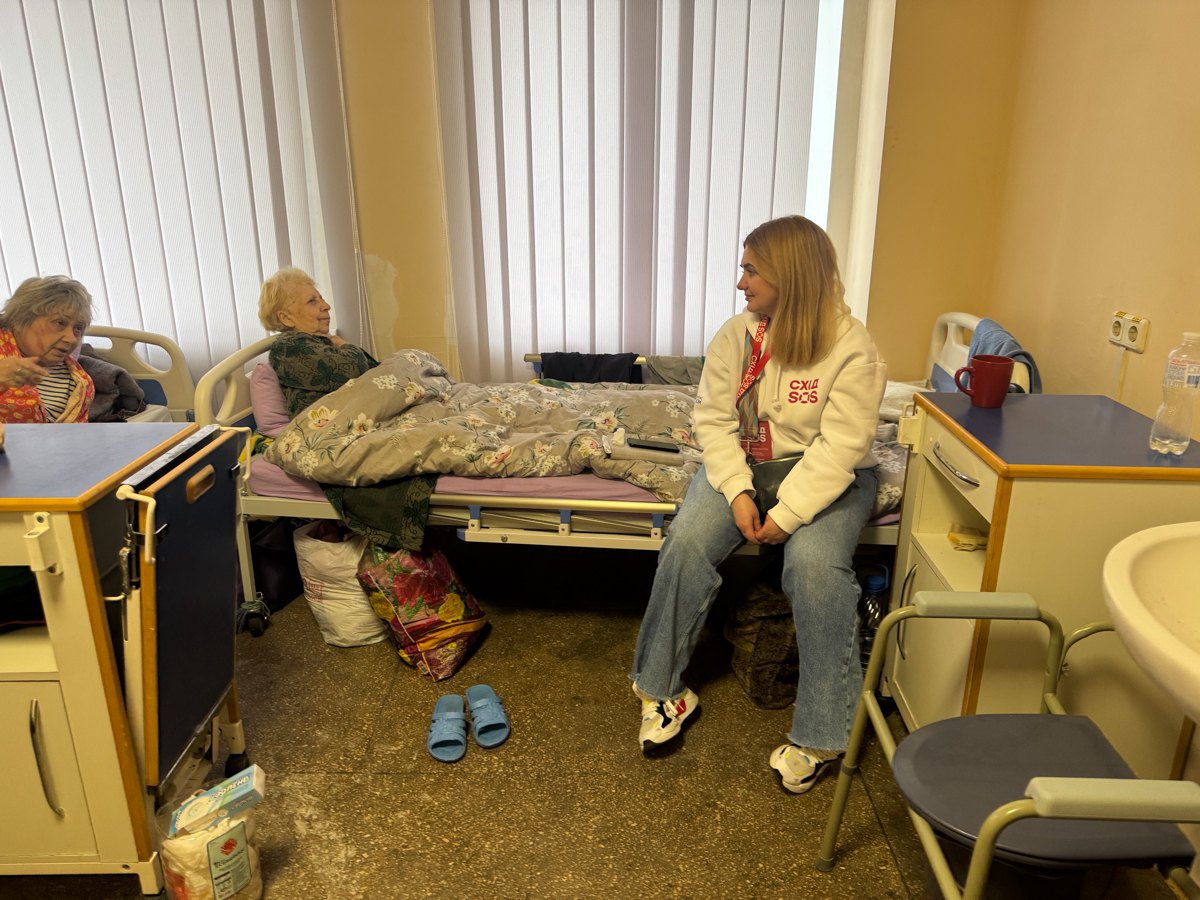
There are examples where military administrations are directly involved in solving the problem of accommodation. Recently, in the Cherkasy Region, the Shakhivska Military Administration opened a supported living facility for people with reduced mobility from the Donetsk Region, and the Selydovska Military Administration plans to open an inpatient care facility in the Odesa Region by the end of the year. But such cases are rare.
Meanwhile, last year, the Ministry of Social Policy launched a pilot project to provide elderly IDPs and persons with disabilities with inpatient care and supported living services based on the principle of "money follows the person" as an alternative to institutional care. This is the very support from the state budget that they are seeking.
While inpatient care is more or less clear, assisted living services require some explanation. In fact, the provider undertakes to provide the elderly person with accommodation in specially equipped flats or houses, to help with housekeeping, to organise medical care, etc. Legal entities or sole proprietors who are included in the Register of Social Service Providers and Recipients and join the programme can count on compensation of almost 10,000 hryvnyas for supported living. A little more than 16,000 hryvnyas is the reimbursement for inpatient care services.
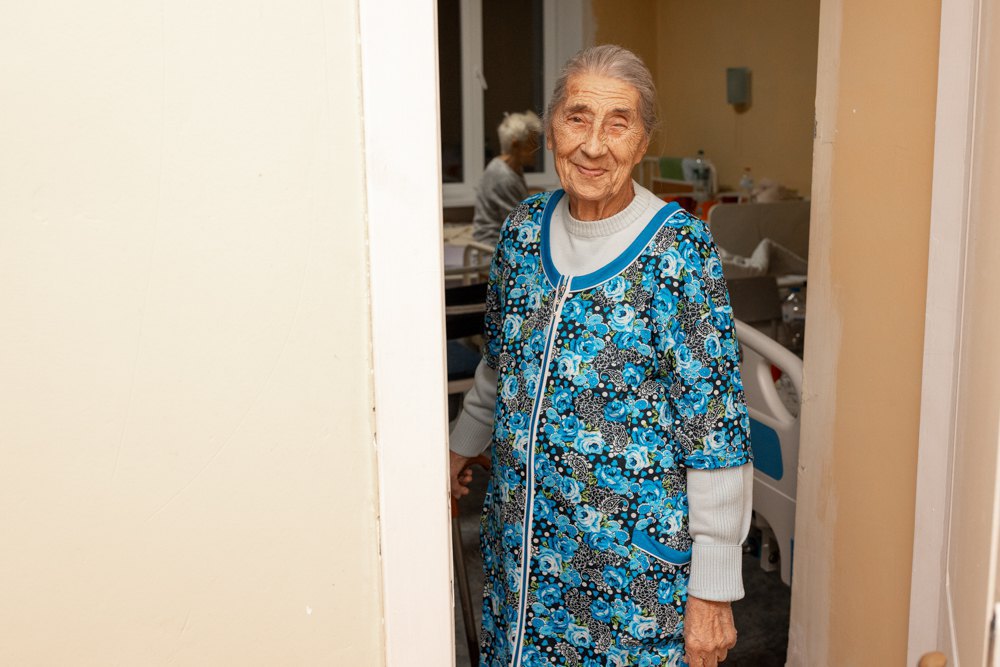
However, the results are currently more than modest. In 2025, UAH 367 million was allocated for the implementation of the project. But only three dozen service providers across the country have joined the programme and will be able to receive or are already receiving state funding. The programme covers about 300 people.
"When we saw the name of the pilot project, we were very excited," says Vasyl Ilnytskyy. "But then we read the document and found out that the conditions for institutions to join were quite strict. For example, rooms must be for one or two people. We only have one such room. There were other obstacles as well. In the end, unfortunately, we had to abandon the idea. It seems that the state gives with one hand and takes away with the other.”
Among the criteria, for example, are location requirements. For example, if the facility is in the city, the nearest public transport stop must be no more than 800 metres away. There are also restrictions on the number of people in a separate room. In the case of inpatient care, this is no more than 35 people, and for assisted living, no more than eight. In addition, if assisted living services are provided, there must be a kitchen where people can cook for themselves and a place for laundry.
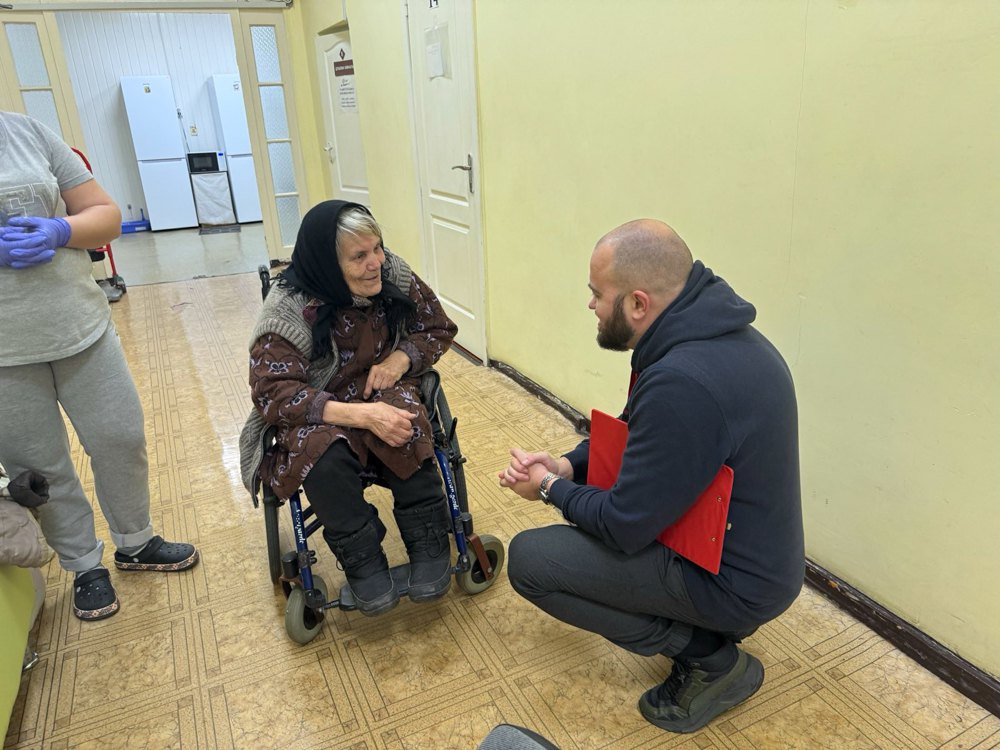
"This is a very cool story, a very good initiative. But perhaps not when there is an active evacuation of elderly people. And most geriatric facilities, which are mostly large, with fifty or more places, do not meet the programme's conditions," says Kateryna Skrypova. "Perhaps it is worth looking at this story from a different angle, perhaps relaxing the requirements in some way so that more facilities can participate. This would then free up a certain number of places.”
In the meantime, these are mostly being created by charitable organisations. For example, Caritas Ukraine has opened temporary accommodation facilities with the help of its partners from Caritas Austria. They maintain a network of six facilities for people aged 60+. To this end, they have renovated and refurbished old buildings in Odesa, Ivano-Frankivsk, Kolomyya, Boryslav, Ternopil and Chortkiv.
Like East SOS and the Proliska humanitarian mission, they carry out renovation work and equip temporary accommodation facilities (TAFs) for the needs of elderly people and people with disabilities. After all, there is nothing more permanent than the temporary. Many elderly people stay in TAFs for two or three years.

Retirement in a dormitory
The first evacuees were accepted into the dormitory of Cherkasy State Technological University on 8 March 2022. At that time, parents were taking their student children home, and their rooms were being occupied by people fleeing to safer regions. Subsequently, the management of the institution decided to leave one of the four dormitories with three dozen rooms for internally displaced persons. It was registered as a temporary place of residence.
Since then, more than a thousand people have passed through the dormitory. Currently, 61 people who were forced to leave Popasna, Kramatorsk, Lysychansk, Kharkiv, and Lyman live there. Ten percent of them are elderly.
Each person has 18 square metres of personal space, with one kitchen, a shared toilet and shower for every 13 rooms on each floor. On the first floor, there is a gym that was once equipped for students. Last year, a sewing room was opened in the dormitory. This year, a beauty room was added. Volunteers, including the charity organisation Right to Protection, helped with materials for repairs. Residents pay 2,000 hryvnya per month to live here.
The dormitory is not equipped for people with limited mobility. It is a five-storey building without lifts, and there are no rooms on the first floor.
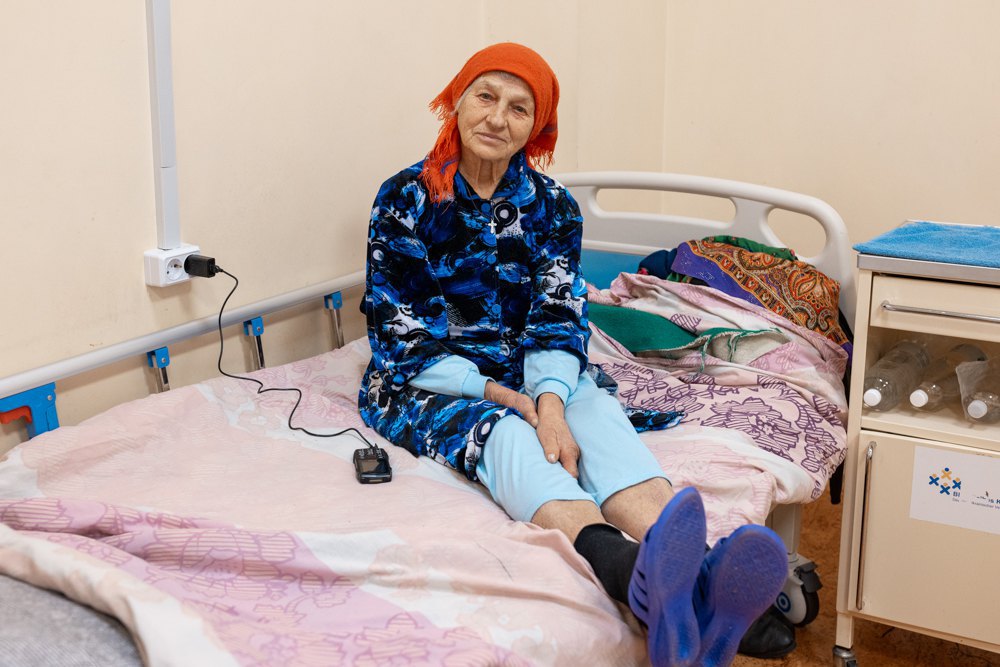
“Therefore, of course, we cannot take in people who have difficulty moving around,” says Lyubov Romanenko, head of the MTP. “For example, we have an elderly couple living with us, the man is 70 years old, and it is difficult for him to climb to the fifth floor. Only recently were we able to move them to a lower floor, the third. Or another situation. In the spring, volunteers called me and asked to accommodate a 62-year-old man. They said, "He can walk, but he has throat cancer and needs to travel to Cherkasy for chemotherapy, which is very difficult from Uman." We gave him a room. However, his legs gave out and I don't know if he will be able to walk. The volunteers who asked us to accommodate him refused to help. And now imagine, he is all alone here, with no one to look after him. We called an ambulance and had to gather the children to carry him downstairs, you understand?”
The man is now undergoing treatment in neurosurgery.
“Well, he lives with us, so he's already ours. So you start looking for someone to turn to, someone to help him. It's all the human factor. As my grandmother used to say, there are as many miracles as there are people. Another elderly woman has diabetes and is going blind. Her son and his wife once stayed with us, and he followed me around saying, "Find her a place." She was somewhere in Rivne, living in a school gym. And when we took her in, her son immediately ran away and is now somewhere near Moscow. Okay, it's your choice, if that's what you want, well, please go. But who did you leave your mother with here? Of course, she was worried, she had a stroke. We registered her as a first-degree disabled person, and social services visit her. These are the kinds of stories that happen. Maybe that's why people are afraid to take in the elderly, because then you are responsible for that person's fate, you can't just throw them out on the street.

Nowadays, there is no longer the same turnover of residents as there was in the beginning, when people thought that it would all be short-lived. Now it's the opposite. Almost everyone has renovated their homes, and some have moved their furniture here.
"People understand that it is unclear how long the war will last, and that they need to live normally now," says Lyubov Mykolayivna. "And even if it all ends, there is nowhere to return to."
More than a thousand temporary accommodation facilities have been registered in Ukraine, housing 80,000 internally displaced persons. However, the story of temporary accommodation facilities is somewhat similar to that of geriatric nursing homes. Conditions in many of them can hardly be called good.
The standard set of problems includes unsatisfactory sanitary and hygienic conditions, an insufficient number of bathrooms and showers, premises that are not adapted for people with limited mobility, insufficient furniture, and a lack of equipped shelters and personal space. At least, these are the conclusions reached by the Office of the Human Rights Commissioner after more than a thousand inspections last year.
At the same time, there are also few places available: out of 80,000, only about a tenth remain vacant.
This year, the government tried to solve the problem of poor conditions and lack of space with the help of subsidies. At the end of September, UAH 1 billion was allocated for the renovation and furnishing of temporary accommodation for internally displaced persons. But there are nuances here too. Some people, after weighing the pros and cons, rejected the idea.
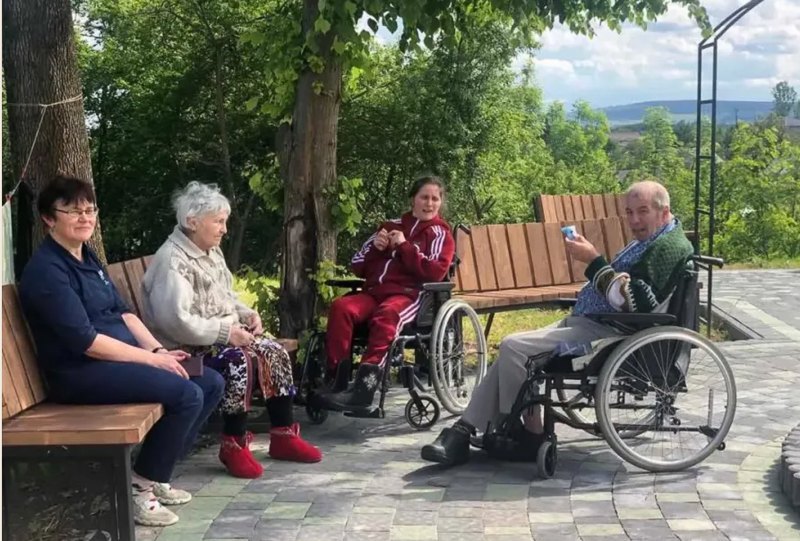
For example, the Kalush Geriatric Centre has been planning an expansion for a long time.
“We constantly receive calls from locals and foundations asking if we have any vacancies and if we can accommodate people. We have one building that we could use for additional space. But it needs major repairs. We need to install utilities, fix the roof — literally everything. We were looking for funds for this. And, by the way, the repairs could have been done as part of the inpatient care programme, taking into account all its requirements," says Vasyl Ilnytskyy.
So, assistance from the state is indeed welcome.
But again, under the terms of the programme, we have to report on the work done every month, and the funds must be used by the end of December. Otherwise, they will be returned. And now I will tell you about our reality. I did not expect money from the Cabinet of Ministers, we had a little of our own because we have paid places in the facility, and I planned to put a roof on the premises. In addition, last year we purchased paving stones to build a courtyard so that people would have a place to go and breathe fresh air. All of our residents are elderly, and it is difficult for them to move around; some are in wheelchairs. I turned to companies to do the work, but there is no one to put the roof on, no one to lay the paving stones. Some are at war, others left after the law was passed allowing young people to leave. And now we have this situation — the state is giving us money until the end of the year to do something, but it's simply unrealistic in such a short time frame.
The frontline regions have their own story. Here, the factor of infrastructure destruction has been added, which in some places makes repair work impossible, and in others makes it very difficult. Therefore, the use of funds by the end of the year is highly questionable. To save the situation, the Ministry of Social Policy has begun to make changes, for example, it has developed a mechanism for returning unspent money and redistributing it. It has also allowed the purchase of building materials this year for use next year. However, a breakthrough in the creation of new places is unlikely to happen in the near future. But the subsidy is promised to be included in the future budget.

It is worth mentioning another recent experiment by the ministry — a social service providing shelter for people with reduced mobility who had to be evacuated. This service can also be provided in temporary accommodation, provided that it meets basic accessibility requirements: ramps, appropriate bathrooms, suitable beds — and provides appropriate social support. The state will pay 8,000 hryvnya per person per month for a year.
These are all quick decisions to respond to acute problems related to evacuation, says Tetyana Kireyeva. However, it is difficult to call them too quick in the fourth year since the start of the full-scale invasion. Now the Ministry of Social Policy is holding meeting after meeting to convince the regions to take advantage of these financial instruments.
Meanwhile, to see what a solution to the problem might look like, it is worth visiting the village of Kolonshchyna.
A paradise
80-year-old Lyudmyla moved to Chudo Mistechko before its official opening. She is from Bakhmut, one grandson is a soldier who was killed, and the other was also killed by a shell in front of her eyes. The military evacuated her from the city. That is how she ended up in Lviv, in a facility where she lived in a room with neighbours who had mental illnesses.
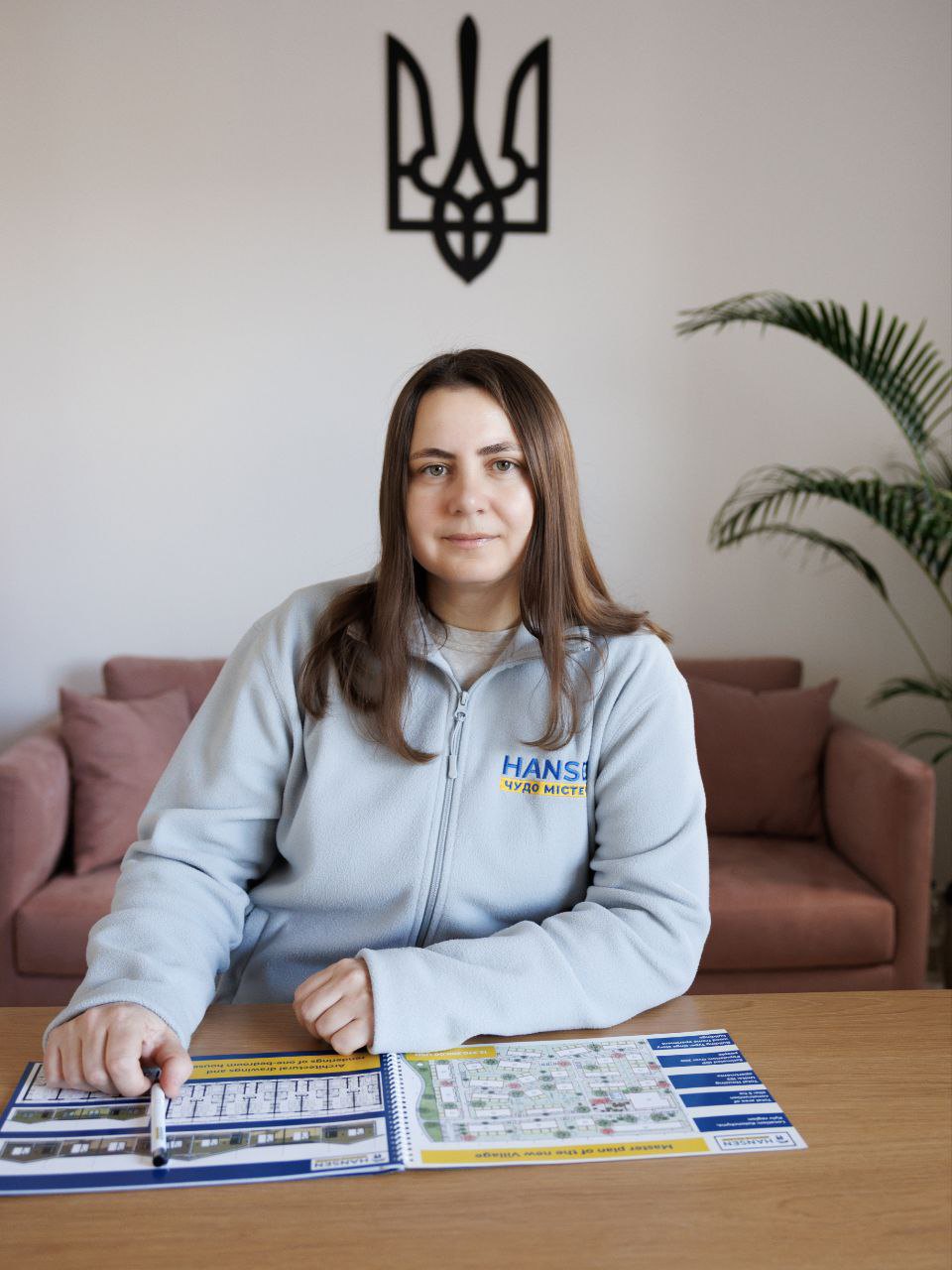
“She was living in terrible conditions. One of her acquaintances helped her write an application, and we waited for Lyudmyla to arrive for the opening. But she actually arrived a week later. She called, cried, and begged, ‘Take me away sooner, I can't stay here anymore, there's a mentally ill person living with me. I'm going crazy.’ We explained that the houses weren't ready yet. But she begged, ‘Please take me.’ And we took her,” says Mariya Zaytseva.
At first, it was just a field on the outskirts of the village of Kolonshchyna in the Kyiv Region. Now there are rows of neat pastel-coloured houses with cosy verandas and well-tended bright flower beds. One of them is home to Lyudmyla. Overall, the place resembles a small resort village. This project is being implemented by American Dell Loy Hansen, founder of the US development company Wasatch Group and philanthropist.
The goal was to provide elderly people with decent housing, and later on, additional services began to be added. The first phase of construction was completed in 2023, and the second in a record five months. So now, almost four hundred elderly people from Bakhmut, Lysychansk, Siverskodonetsk, Luhansk, Pokrovsk and its surroundings live in Chudo Mistechko. The oldest resident is 99 years old. The town cooperates with White Angels, East SOS, and Prolisok. Accommodation for residents of the town is free and for life. Priority is given to parents of military personnel and single people.
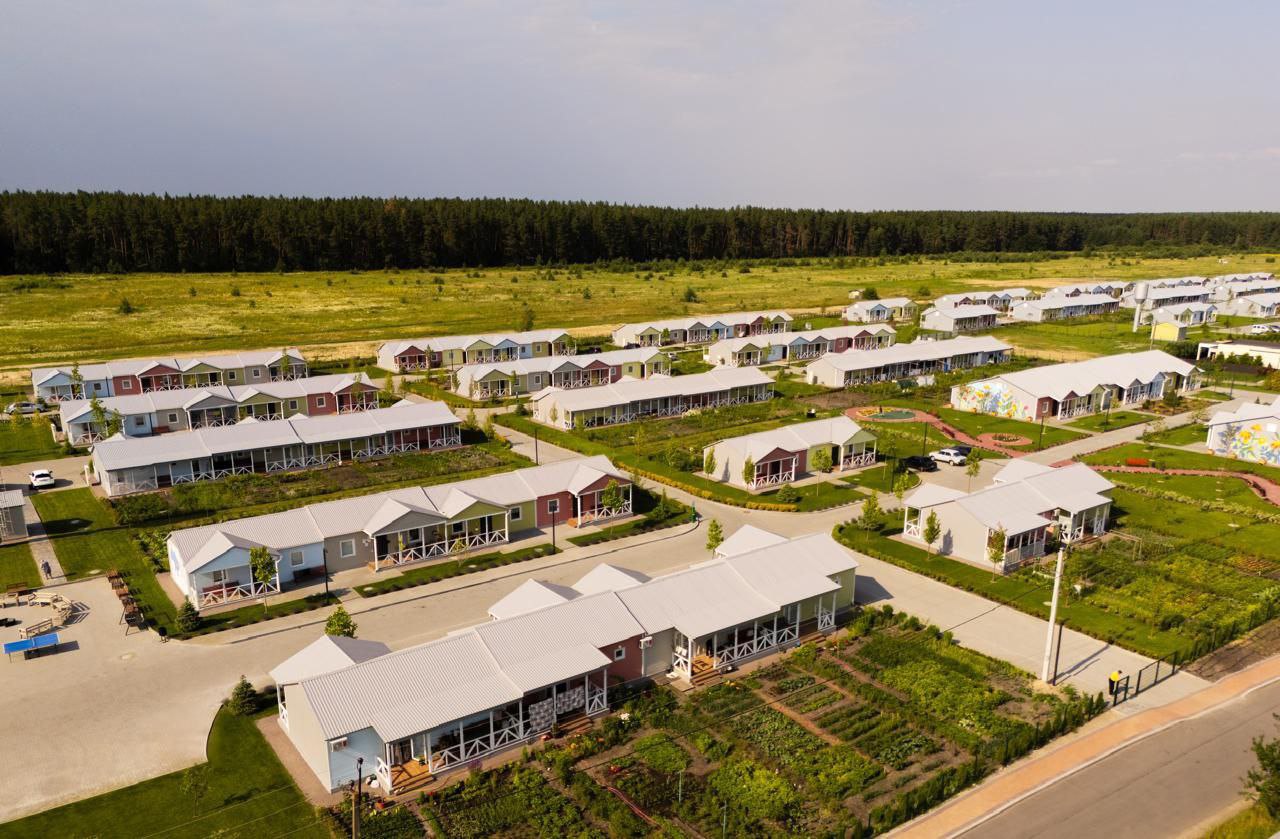
The houses are fully furnished and ready to move into. They have kitchens where residents can cook for themselves, or they can go to the dining room. They can work in the garden, which is attached to each dwelling, and people actively use this opportunity.
"For them, gardening is a form of therapy," says Mariya. "And we also offer a range of services. We accept a person, doctors examine them. We immediately prepare all the documents. Employees of the Pension Fund visit us every week. There are creative classes, psychologists work here. That is, our boys and girls, as we call them, receive decent housing and decent conditions. And most importantly — peace of mind.
There is a shop on the premises, and our own minibus runs to Makariv three times a day. Twenty social workers, who are residents themselves, work here. They help those who need inpatient care or simply support in resolving certain issues.
There are 18 volunteer groups operating in the town. Some look after flowers, some sing, and some help the Armed Forces of Ukraine.
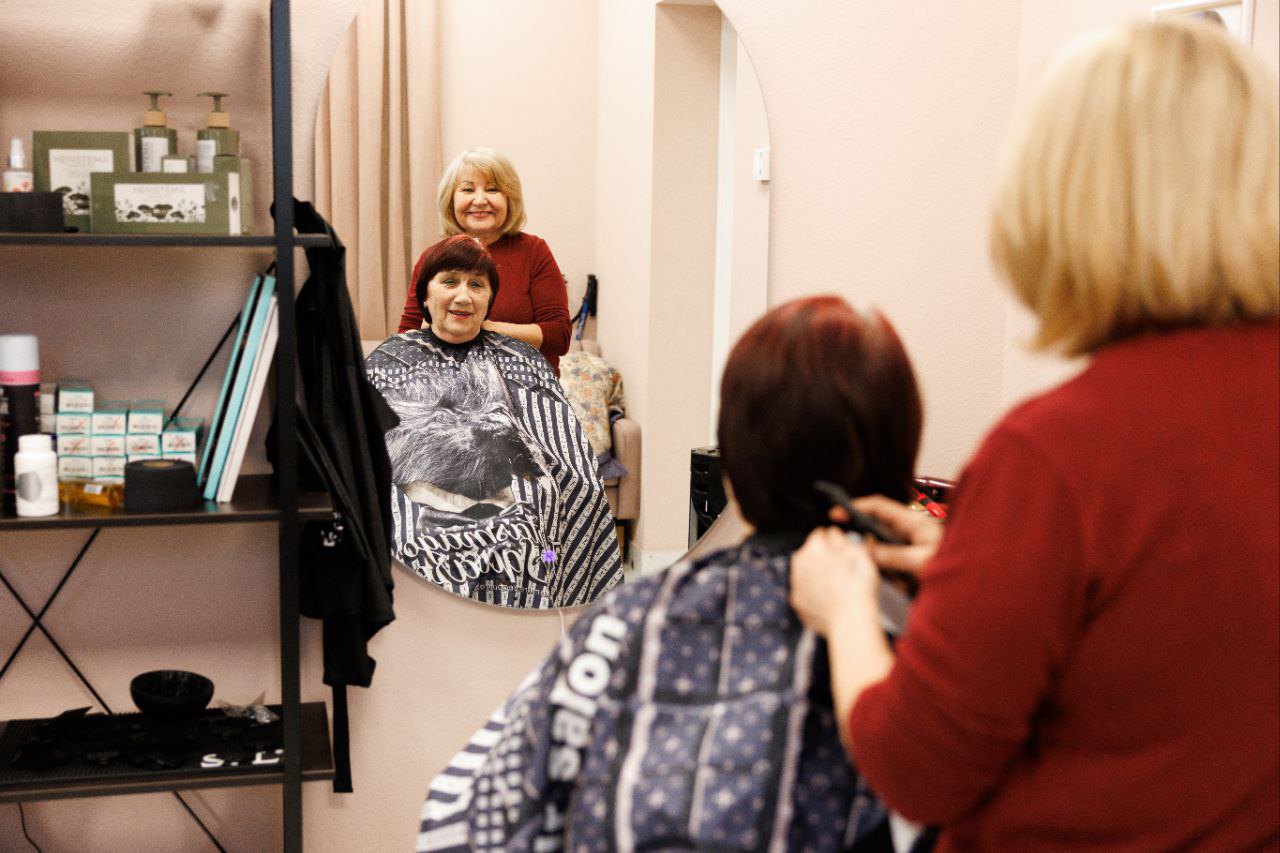
“Our grandmothers weave threads from burlap, which are then used to make ghillie suits. When it comes to community integration, we deliver 50 hot meals every day to nearby villages for those who are alone and low-income families. In general, the town promotes active longevity. For example, a man from Pokrovsk, who was a teacher, came to us. He was evacuated by the White Angels. At home, he ran a qigong club. Now he holds the same classes here. Even people from our inpatient care, including a grandmother on a walker, attend them. A fitness trainer comes three times a week, and the grandmothers just run to the gym. I could tell you so much more,” Mariya laughs.
It's no surprise that there are no vacant places here.
"Everything is so beautiful there that it's hard to believe it's not some kind of scam," says Svitlana.
She also filled out an application for two grandmothers, her mother and her sister, to live in the town.
They left Myrnohrad last autumn when the situation in the city became very difficult and dangerous. Svitlana decided to rent an apartment for the grandmothers in Kyiv. However, it's not that simple.

“My grandmothers are independent, active, and take care of themselves. But landlords are not very happy about animals, children, and elderly people.”
The last time, after changing several apartments, Svitlana decided not to tell the landlady that elderly people would be living in the apartment. She hoped that since the owner lived on the other side of town, she would not check. They signed a three-month lease agreement. The woman wanted to make sure that Svitlana was solvent, because she was an IDP. She set the rent at 15,000 hryvnyas plus utilities. However, the owner later found out that elderly women had moved into the flat.
"She came right away. She was very worried that they would get sick and not be able to take care of themselves. There would be a stench. ‘And they could even die here,'" says Svitlana. "And we were asked to move out."
Now Svitlana is once again looking for housing for her relatives. She has already considered several options: a dormitory for internally displaced persons, a boarding house near Kyiv, where you have to pay 26,000 hryvnyas per person per month. She really hopes that she will be able to settle them in Chudo Mistechko.
From 2023, this project will be fully funded by the businessman himself. Maintaining the town costs $60-70,000 per month. The biggest expenses are salaries and electricity.
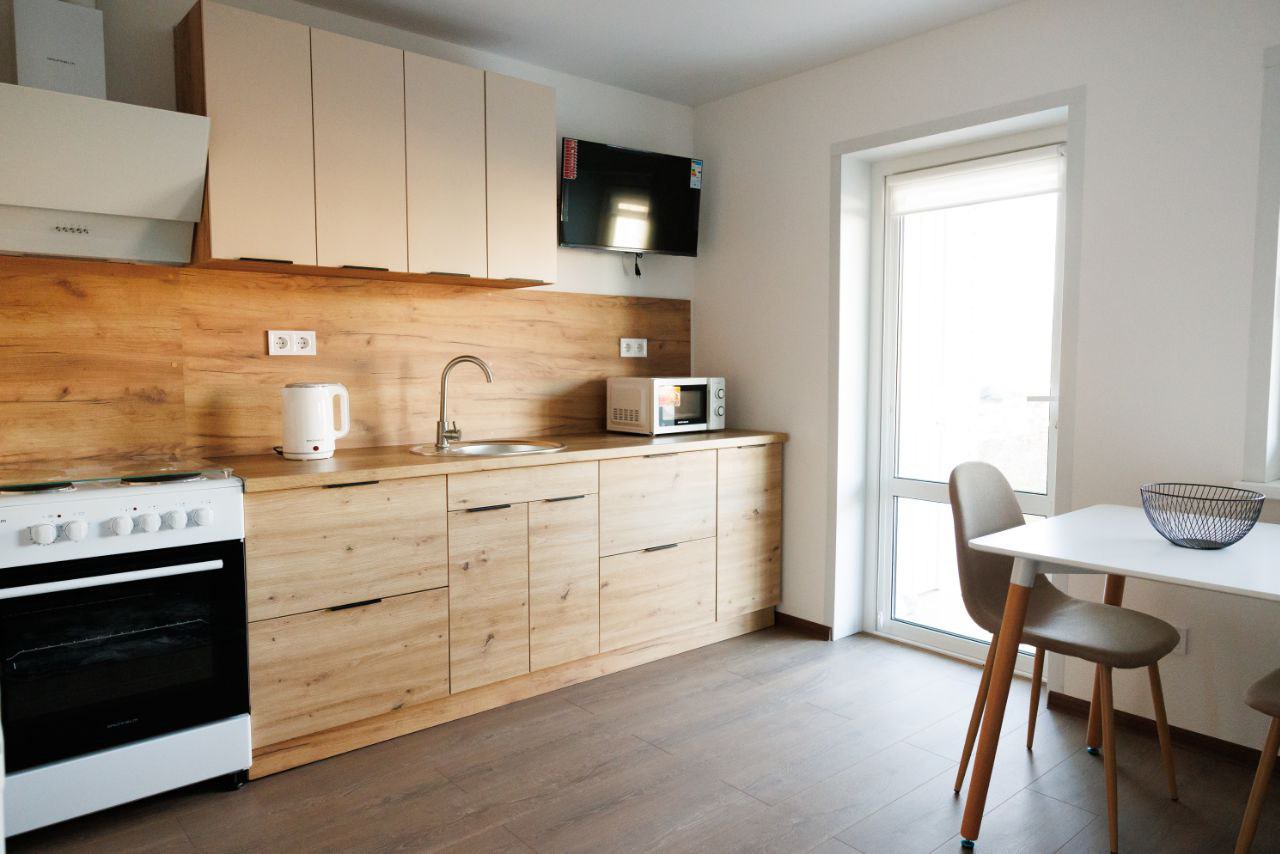
This year, Chudo Mistechko joined a state-sponsored experimental project for supported living and inpatient care called Money Follows the Person.
“This programme is really good. But we would like more funding, because it doesn’t fully cover our expenses,” says Mariya.
All social workers have already undergone training in supported living and were the first in the Kyiv Region to receive the relevant certificates.
"We really want there to be more towns like this. And we want the project to be scaled up. Older people are underappreciated in our country, but they deserve to receive help. And they need it right now. They don't have time to wait. I really want to believe that someone will start helping them at a decent level.
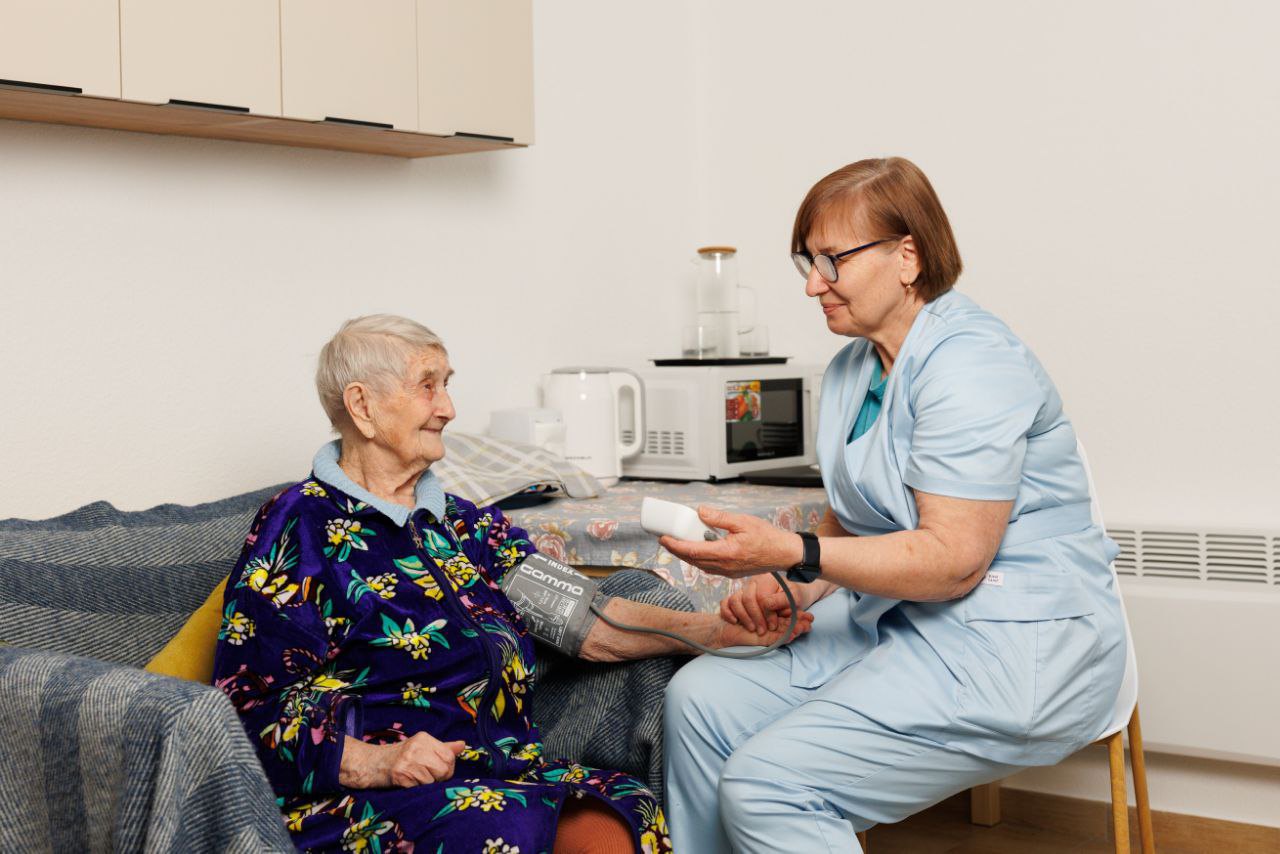
There is indeed a lot of interest in the town. Delegation after delegation arrives here from different regions, but so far it has remained at the level of interest. Meanwhile, the town is expanding, with construction underway on a third phase with 250 places and another 20 places for inpatient hospice care. The investment is $12 million. Separately, construction has begun on two shelters, one of which is a transit shelter specifically for elderly people, so that they have a place to recover after evacuation.
In general, according to the Ministry of Development, there is currently a need to evacuate more than 280,000 people from dangerous areas. 11,500 of them are people with reduced mobility.
